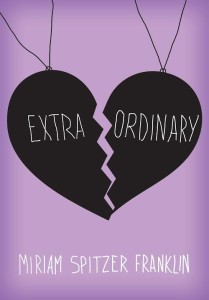“The Joy of Sharing Literature in A Classroom”
by Miriam Spitzer Franklin
With the push for better standardized test scores, reading workshops have increasingly turned toward focusing on building stamina during independent reading so that students will be able to read multiple passages and answer questions during a test that lasts hours. Helping students build stamina so that they can read longer independently is a worthy goal. But for some students, like my third grade daughter, being expected to read on her own for 45 minutes means she’ll lose her focus after 15 minutes and will spend the rest of the time quietly floundering on her own.
A better strategy is to have shorter independent reading sessions and spend more of the workshop teaching literature in small groups or to the whole class. During the class reading of a high-quality literary work, those students who are unable to sustain focus will be redirected if the material is engaging. Teachers can set expectations for reading, help students make predictions, and check often for understanding. In a group with a wide range of learners, some of the students can read independently while the others have a more structured approach with a combination of read-alouds, short sections of silent reading, and teacher modeling of expressive oral reading.
Literature studies should focus on higher level thinking skills. Teachers should ask questions that lead to divergent answers and deeper discussions. Teachers should choose books that lead students to think about different themes, to help them make connections with the characters, and to encourage questions that lead to better understandings of themselves and how they fit into the world.
In my middle grade novel, Extraordinary, ten-year-old Pansy decides she’s going to become an extraordinary person after her best friend suffers a brain injury. She is sure that the upcoming surgery for seizures will fix her brain, and when that happens, Pansy is going to make up for all the times she’s let her friend down in the past. My novel explores themes of hope, perseverance, self-esteem, friendship, and acceptance. Students can work in partners and small groups to identify character traits, character growth, and interpretations of the themes. Because students are all reading the same book instead of reading independent choices, peer or teacher-led discussions will lead to deeper understanding and analysis of the novel.
If we want students to dig below the surface to find meaning in text, they need to be evaluated through creative projects, written responses, and class discussions, not through a multiple choice test. In this way, students will discover a different purpose for reading; instead of reading to get the right answer, they will read to discover the joy of literature and the way books can transport them to places and situations they have never experienced before.
About the author: Miriam Spitzer Franklin taught elementary and middle school for twenty years, in both public and private school. Currently she teaches homeschooled students, designs curriculum for an online site, and is a writer-in-residence with the Charlotte Arts & Science Council. Other jobs she has held include working as a frazzled and unorganized waitress at a number of restaurants, driving the Zamboni and working the skate counter at the ice skating rink, teaching ice skating lessons, and owning a toy and gift store with her husband, Scott. Miriam lives with her husband, two daughters, and two pampered cats in Charlotte, North Carolina.
www.miriamfranklin.com
About the book: Last spring, Pansy chickened out on going to spring break camp, even though she’d promised her best friend, Anna, she’d go. It was just like when they went to get their hair cut for Locks of Love; only one of them walked out with a new hairstyle, and it wasn’t Pansy. But Pansy never got the chance to make it up to Anna. While at camp, Anna contracted meningitis and a dangerously high fever, and she hasn’t been the same since. Now all Pansy wants is her best friend back—not the silent girl in the wheelchair who has to go to a special school and who can’t do all the things Pansy used to chicken out of doing. So when Pansy discovers that Anna is getting a surgery that might cure her, Pansy realizes this is her chance—she’ll become the friend she always should have been. She’ll become the best friend Anna’s ever had—even if it means taking risks, trying new things (like those scary roller skates), and running herself ragged in the process.
Pansy’s chasing extraordinary, hoping she reaches it in time for her friend’s triumphant return. But what lies at the end of Pansy’s journey might not be exactly what she had expected—or wanted.
Extraordinary is a heartfelt, occasionally funny, coming-of-age middle grade novel by debut author Miriam Spitzer Franklin. It’s sure to appeal to fans of Cynthia Lord’s Rules and will inspire young friends to cherish the times they spend together. Every day should be lived like it’s extraordinary.
From the Atlanta Journal-Constitution: This moving novel is narrated by Pansy, whose best friend Anna has contracted a disease that has impaired her brain. “Losing” a best friend this way can be a tough challenge. North Carolina author Franklin firmly grasps the climate and struggles among kids today. Her crystal-clear writing is filled with rich detail and believable characters. The sensitive story will resonate with young girls wrestling with friendship pains. (Sky Pony Press, ages 8-12)
Thank you to Miriam for her wonderful guest post!



Hi admin, do you monetize your blog ? There is easy method to earn extra money every day, just search on youtube :
How to earn $25/hour selling articles